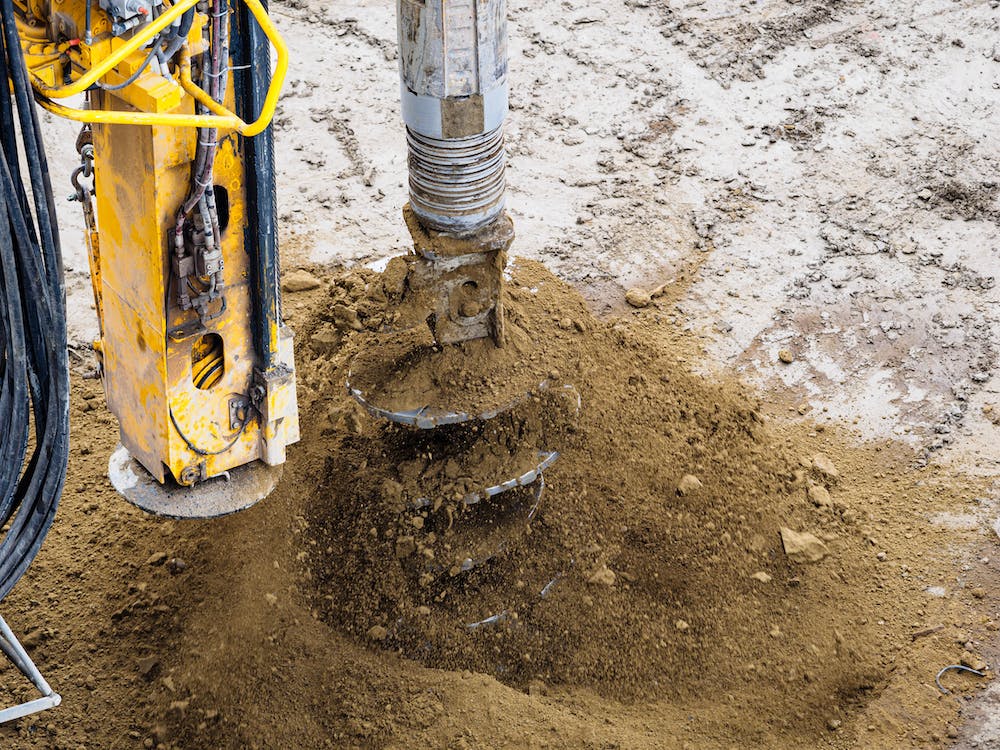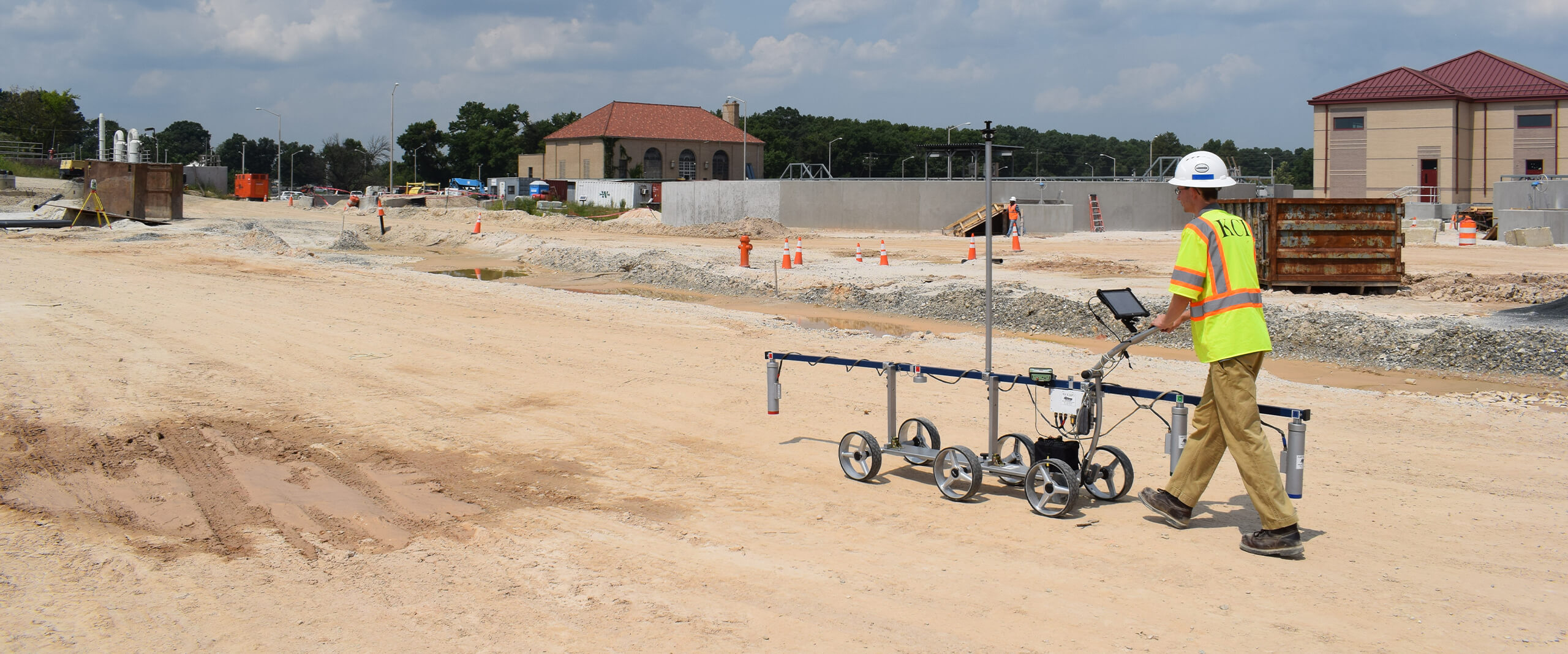The Value of Geotechnical Design in Resolving Environmental Difficulties and Enhancing Construction Security
Geotechnical engineering serves as a keystone in the junction of environmental stewardship and building and construction safety, providing critical insights right into the actions of dirt and rock under numerous problems. By implementing strategic site investigations and customized reduction steps, geotechnical engineers play an essential duty in guarding both human lives and environmental integrity.

Role of Geotechnical Design
Geotechnical engineering plays an important role in the layout and building of facilities by resolving the behavior of soil and rock materials under different problems. This field of engineering is important for comprehending the interaction between frameworks and the ground, that includes identifying the load-bearing ability of soil, analyzing security, and forecasting prospective negotiation or failing.
Geotechnical engineers are accountable for conducting website examinations, which involve sampling and screening dirt and rock to collect data on their chemical and physical residential or commercial properties. This information is important for making structures, retaining wall surfaces, and various other earth-retaining structures that make certain security and longevity. Geotechnical design educates the option of proper building and construction techniques and products, thereby lessening threats linked with soil behavior.
In addition, the assimilation of geotechnical design principles into metropolitan planning and ecological management is critical for resolving difficulties such as ground contamination and groundwater administration. By comprehending geotechnical variables, engineers can develop sustainable services that boost the durability of infrastructure against natural threats, while likewise advertising environmental stewardship. Inevitably, the role of geotechnical design is essential for attaining risk-free, sturdy, and eco aware building and construction techniques.
Dirt Disintegration Reduction
Dirt disintegration positions a substantial danger to both environmental stability and facilities integrity, impacting around 24 billion lots of productive dirt lost yearly worldwide. This phenomenon is aggravated by variables such as deforestation, urbanization, and bad agricultural techniques. Geotechnical design plays an essential duty in developing effective dirt disintegration mitigation approaches that guard both the environment and building and construction jobs.
One strategy requires the execution of erosion control techniques such as plants planting, which supports dirt through origin systems. Additionally, the building and construction of preserving balconies and walls can successfully lower surface area drainage and safeguard prone areas from disintegration. Correct water drainage design is additionally important; it lessens water buildup and guides excess overflow far from critical frameworks.
Moreover, geotechnical designers utilize soil stablizing techniques, such as the application of geotextiles and biodegradable mats, to enhance dirt cohesion and avoid deterioration - geotechnical engineer description. Routine surveillance and analysis of erosion-prone sites make it possible for timely interventions, ensuring long-lasting sustainability. By incorporating these strategies, geotechnical design not just minimizes the influences of dirt disintegration but additionally adds to the resilience of infrastructure versus ecological obstacles, ultimately fostering a more secure and extra sustainable constructed setting
Groundwater Protection Methods
Groundwater functions as an important source for alcohol consumption water, agriculture, and commercial procedures, making its defense vital for environmental sustainability and public health and wellness. Efficient groundwater defense approaches are important in mitigating contamination dangers and making certain the durability of this source.

Regular tracking of groundwater high quality is also important, enabling early detection of contamination resources and helping with prompt removal efforts. Employing sophisticated technologies, such as geophysical surveys and remote noticing, aids in identifying possible dangers to groundwater books.
In addition, public education and stakeholder involvement are vital, cultivating area assistance for groundwater protection efforts. geotechnical engineer description. By combining regulative steps, technological developments, and neighborhood participation, we can produce a comprehensive framework that safeguards groundwater resources while advertising lasting growth and building practices
Landslide Risk Management
Landslides present significant risks to both human security and framework, making effective threat monitoring approaches necessary. Geotechnical design plays an essential function in identifying, analyzing, and mitigating landslide risks. A comprehensive understanding of slope security, soil mechanics, and hydrology is vital for developing effective danger monitoring strategies.
The initial step in landslide risk monitoring entails thorough website examinations, that include geological mapping and soil testing. These examinations assist designers evaluate the possibility for landslides by identifying essential variables such as slope angles, soil structure, and water web content. Utilizing sophisticated innovations such as remote sensing and geophysical surveys can enhance the precision of these analyses.
Once threats are determined, suitable reduction actions can be implemented. These may consist of design options such as keeping wall surfaces, water drainage systems, and incline stabilization techniques. In addition, keeping track of systems should be established to detect indicators of ground activity and modifications in water degrees, enabling proactive interventions.

Enhancing Building Safety
Building and construction websites commonly provide a myriad of hazards that can jeopardize employee safety and security and job integrity. Geotechnical design plays a crucial role in enhancing construction safety by offering necessary insights right into subsurface conditions. With thorough soil and rock evaluation, geotechnical designers can determine prospective risks, such as dirt instability, groundwater concerns, and seismic vulnerabilities, which might endanger the safety and security of building activities.
Applying geotechnical remedies, such as appropriate structure design and using preserving structures, alleviates More Info these threats considerably. These options not just guarantee the security of the frameworks being developed yet additionally Going Here develop a much safer working atmosphere for construction personnel. In addition, extensive surveillance and analysis of website conditions throughout the building and construction procedure are vital. Making use of advanced innovations like ground-penetrating radar and inclinometer systems enables real-time data collection, permitting prompt interventions when risks are spotted.
Moreover, cultivating a culture of safety through training and adherence to developed security protocols further boosts construction site safety. By incorporating geotechnical knowledge right into the preparation and implementation stages, construction tasks can achieve greater safety criteria, inevitably protecting workers and making sure effective job completion.
Final Thought
In conclusion, geotechnical engineering offers as a crucial discipline in advertising and tackling ecological challenges building safety. Through effective soil disintegration mitigation, groundwater protection techniques, and landslide danger monitoring, geotechnical engineers add to the advancement of durable framework.
Geotechnical engineering offers as a keystone in the intersection of environmental stewardship and construction security, providing essential insights right into the habits of soil and rock under different problems. Geotechnical design informs the choice of proper building and construction approaches and materials, thereby lessening threats associated with dirt habits.
Geotechnical design plays an essential role in developing efficient soil disintegration mitigation methods that safeguard both the setting and construction tasks.
Additionally, geotechnical view it now engineers utilize soil stabilization methods, such as the application of geotextiles and biodegradable floor coverings, to boost soil cohesion and stop deterioration. With extensive soil and rock analysis, geotechnical engineers can identify possible dangers, such as soil instability, groundwater concerns, and seismic susceptabilities, which may jeopardize the safety and security of construction activities.